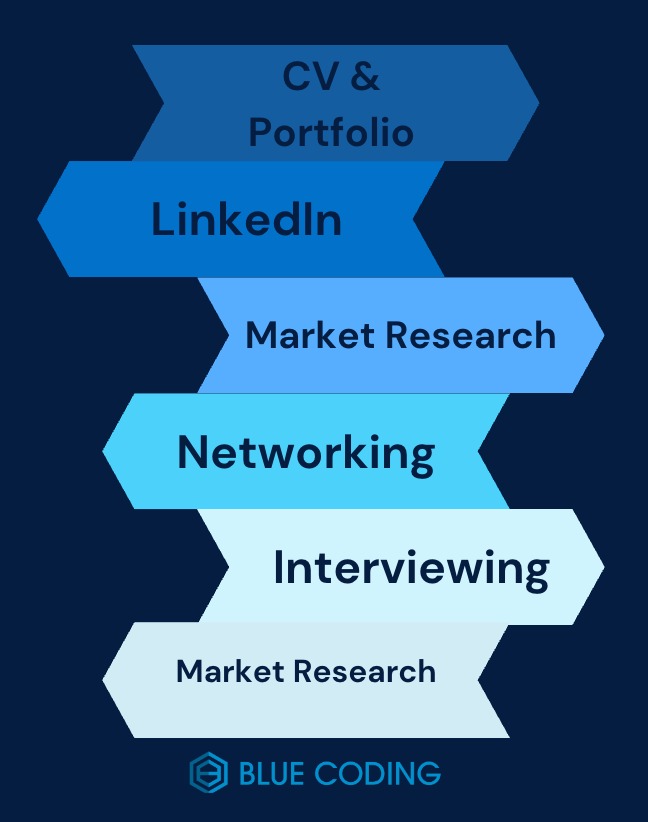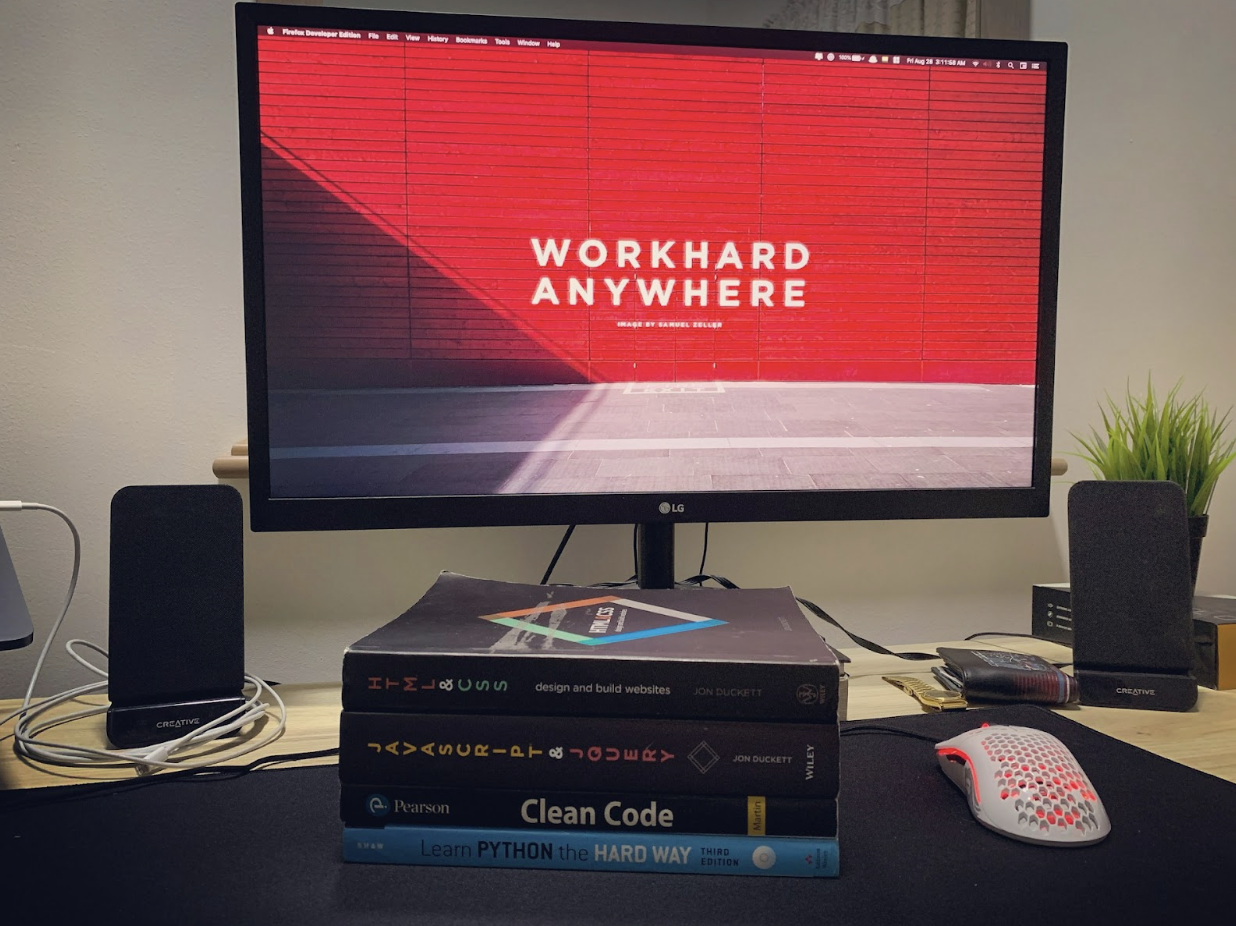 News
News
Blue Coding recently partnered with Geek Girls LATAM to host an online job-hunting workshop for their community. Two members of our amazing recruitment team, Winifer Peralta and Nelson Grullón, led an in-depth conversation about the best strategies to find your first IT job. This article will dive into the key points of our recent #ExpertTalk to summarize the key information to know before you start scouting for your next work opportunity. If you missed our live session or just want to learn how to advance in your IT career, keep reading to learn more!
How To Find Your First IT Job

It All Starts With The Right Resume
Before you do anything else, you should supercharge your resume by ensuring it’s 100% up-to-date and including any personal, professional, or academic projects related to the IT world. This section, paired with a solid portfolio, will ensure recruiters immediately connect you with the industry and give you a chance to show off any knowledge, skills, or past experiences that relate to your dream role. Here are three key things to do before you share your CV:
Personal information: Make sure to always include your full name, email address, country and city of residence, and the professional title that best describes you.
Tasks & Skills: Beyond mentioning what degree/s you’ve earned or the name of your most recent roles, it’s important to also include the key tasks and skills you learned at every job.
Education: The basic data regarding your entire education journey should be on your resume. It’s best to place them in reverse chronological order starting with the latest degree, and it doesn’t hurt to add any courses or online certifications as well.
LinkedIn for IT Jobs

Why It Matters
LinkedIn is a popular and highly useful social media network that allows you to connect with professionals from all over the IT industry, including tech recruiters and target companies you might want to work for. By maintaining an updated profile on this app, it’ll be easier for you to create and nurture connections with relevant individuals, helping you reach employment opportunities and future collaborations faster. It will also serve as your digital portfolio, the place where you can aim to stand out thanks to your achievements and ideas.
What Should Be On Your Profile
When building your LinkedIn profile, make sure to upload a business-appropriate headshot, write a heading that effectively summarizes who you are as a professional, and craft a resume section that reflects your unique value proposition as well as your detailed experience. You can also add endorsements from colleagues, official certifications, career milestones, and new skills.
Networking
We’ve all heard of the term networking and have some preconceived notions about it, but the reality is that this practice can truly help you advance your career, and you should leverage it as often as possible. This is a process through which we can expand our knowledge and growth prospects in our professional careers by connecting with people who relate to our field, goals, or jobs in one way or another. These are genuine relationships that can help you grow and eventually come in handy when job-hunting. While many people say networking is purely transactional, it really doesn’t have to me. We recommend the book How to Win Friends & Influence People by Dale Carnegie to learn more about this topic.
LinkedIn Profile Upkeeping
Profile upkeeping will increase your chances of being found on the app, as it’ll boost your chances of showing up on LinkedIn search results when recruiters look for people with a similar experience and skillset as yours. You can use keywords to show up more often as well, but keeping your profile information up to date comes first!
Market Research as Software Developers
A key skill to have as an IT professional is the ability to research the current job market and IT sector to better understand what people are looking for and what’s trending. Learning about the latest cutting-edge technologies, researching top companies, and diving into the state of the industry as a whole will help you leverage your skillset to best market yourself for any role. You can also research specific companies before applying to make sure you fit in with the company culture and ensure they’re a solid prospective employer.
Market research can be conducted in different ways, but it’s always marked by deep online research where you’ll be able to look up technologies, jobs, or companies you’re interested in - regardless of what other sources of information you turn to later down the road. The best way to do this is to simply start as soon as you can and worry about perfecting your method later.
Current IT Sector Trends
We’ve noticed that companies are actively looking to form more diverse teams, asking for women in tech and more diverse developers. This is a huge advantage to any LATAM developers looking to find IT jobs with North American companies. There’s also a vetting shift, with interpersonal abilities being heavily evaluated, and technical expertise no longer seeming enough to make the cut.
Highlighting Key Technologies
When you’re conducting market research, you should dedicate some time to investigating which technologies and programming languages are currently trending and being demanded more by hiring managers. This will give you a great idea of what to highlight on your resume, as well as guide you in making any decisions about online courses, workshops, or certifications.
Soft Skills
Even though technical expertise is still the number one thing recruiters tend to look for when hiring remote developers, soft skills have become almost equally important. Your interpersonal abilities can now make or break your interview process, and determine whether or not you find your first IT job. A few examples of the most sought-after soft skills are leadership, team-building, emotional maturity, proactivity, and problem resolution.
Looking for Remote Developer Jobs? Join Blue Coding!
At Blue Coding, we connect the best of LATAM tech talent by helping North American companies work with developers from all over Latin America. Our goal has always been to act as the bridge between talented IT professionals and organizations who need the technical solutions they can provide. If you’re looking to find your first IT job or to take the next step in your career, take a look at our open positions and join our team!



